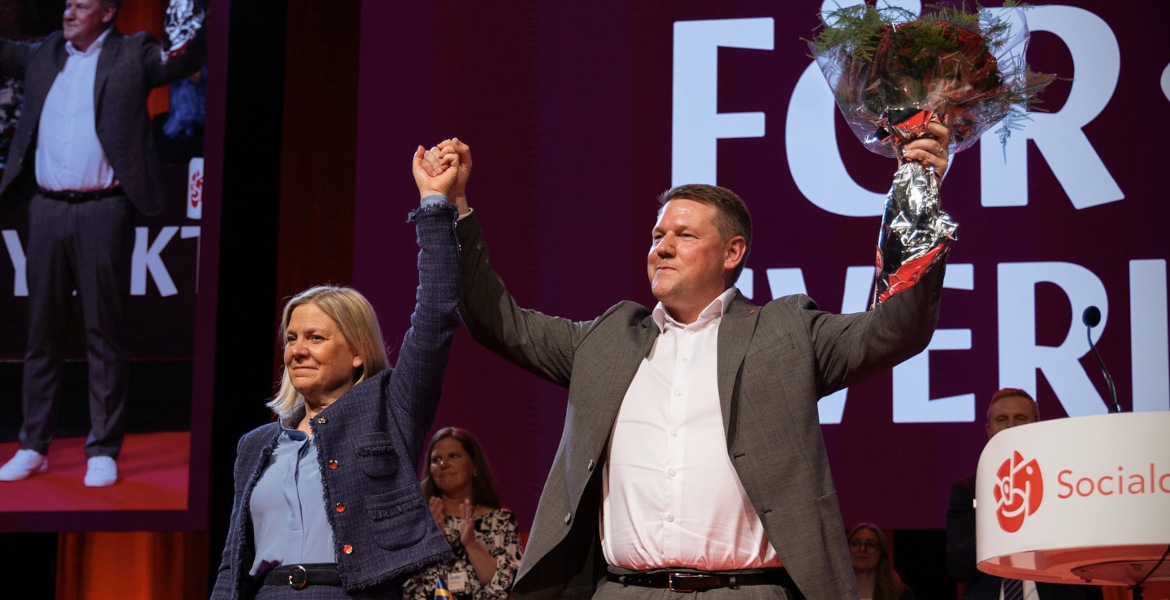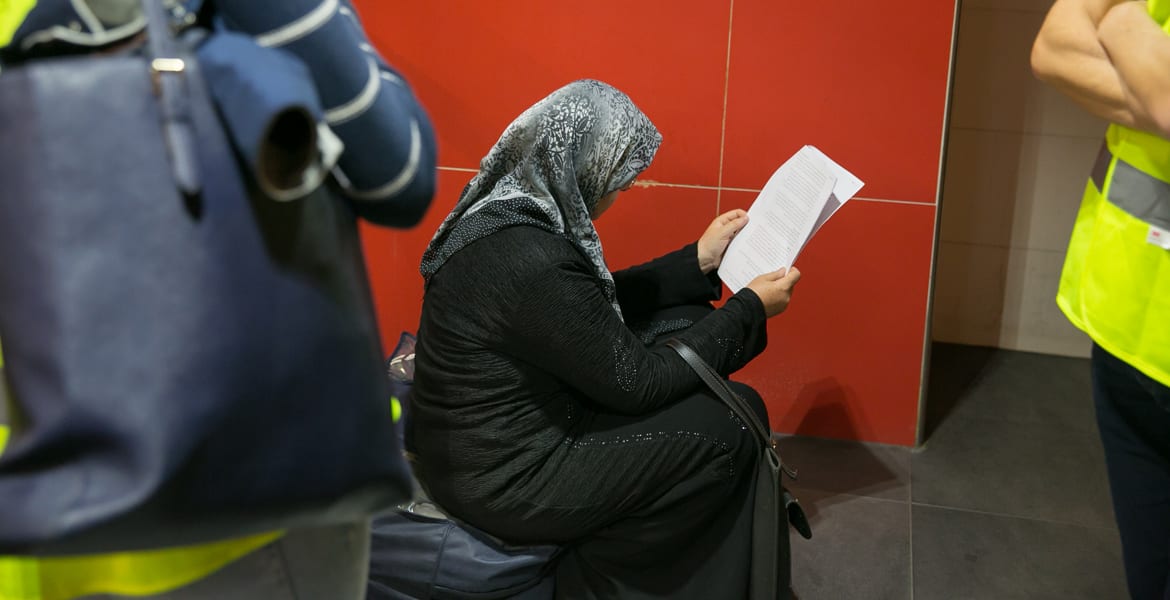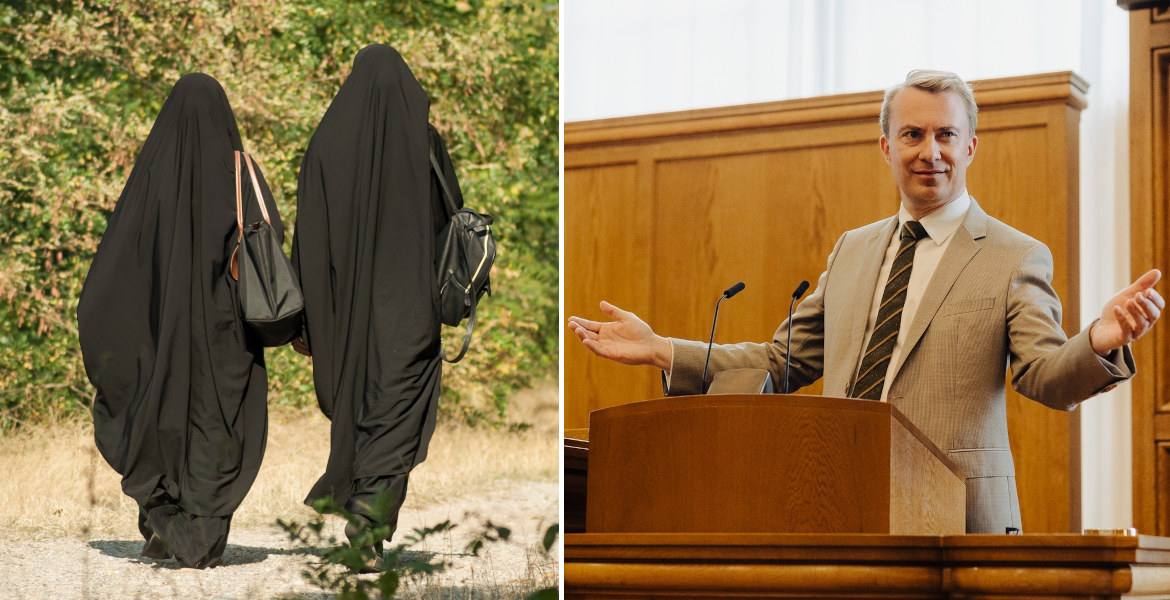The Swedish Social Democrats have concluded that integration efforts over the past few decades have not yielded the desired results.
The party now wants to focus on mixing the population and ensuring that newly arrived migrants are spread out and placed in "socioeconomically stronger" areas.
At the Social Democratic Party congress this weekend, the party presented a new migration and integration policy program for the upcoming elections, with a strong focus on social engineering and mixing people from different backgrounds in the same residential areas.
– It is important from a socioeconomic perspective to achieve diversity, claims Social Democratic Party executive Jonas Attenius in the tabloid Aftonbladet.
Decades of unrestricted mass immigration have led to the creation of ethnic enclaves and areas in many parts of Sweden that are completely dominated by people with non-European backgrounds.
The Social Democrats themselves have been driving forces behind this development and have ignored alarms and warnings from critics – but now claim that the situation is unsustainable and that the solution is instead large-scale, nationwide mixing.
– We are serious about breaking segregation and using housing policy as a driving force in this work, declares Lawen Redar, who has been working on developing the party's new integration policy.
Preventing moves to "vulnerable areas"
To achieve this, asylum seekers will no longer have the right to arrange their own housing, and municipalities will be prohibited from placing migrants in so-called "vulnerable areas" – residential areas where many non-European immigrants already live.
Furthermore, moving to these immigrant-dense areas will also be restricted by making those who move there risk losing their social benefits. Instead, migrants will be placed in "socioeconomically stronger" areas around the country.
– We have legislation that requires us to place people, and it is not God-given that it always has to be in a suburb. But this presupposes strict migration, that it is at a very low level, says Jonas Attenius, chairman of the municipal council in Gothenburg and newly elected member of the Social Democrats' executive committee.
He confirms that mixing is a stated and very important goal for the Social Democrats, but believes that it may take time.
– Yes, we need to mix the population in the long term. I usually say ‘in a generation’. This is a long-term goal.
” Är uppblandning av olika socioekonomiska grupper således ett mål som Socialdemokraterna har?
– Ja, att vi behöver blanda befolkningen på sikt. Jag brukar säga ”in a generation”. Det här är långsiktigt. ” https://t.co/iBGK3QxmmD— Lars Beckman (@beckmansasikter) June 1, 2025
"No problems whatsoever"
– It is important to use our housing construction to achieve this mix. The way we live is also segregated. In one place there are rental properties, in another there are villas and condominiums. We want to work on building a mix, Attenius continues.
He believes that voters will welcome the explicit mixing policy and takes the opportunity in the gossip magazine to apologize to the migrants who have been placed in Swedish suburbs in recent decades.
– I say sorry to them. Sorry for what we’ve done. Now it’s time for the full force of society to step in. If a refugee family moves into an apartment building where people who’ve lived in Sweden their whole lives also live, and five blocks away another newly arrived family moves in — I don't think that will be any problem whatsoever, he assesses.
Sossarnas utspel och politik att ”blanda befolkningen” är inte förvånande men inte desto mindre vidrig.
Det är en mänsklig rättighet att slippa deras mångkultur - framförallt för svenskar i sitt eget land.
Se reportaget ”Socialdemokraterna tvångsflyttar svenska barn för…
— Kent Ekeroth (@kentekeroth) June 1, 2025
No "paradigm shift" yet
Mass immigration to Sweden has been extremely extensive in recent decades – according to statistics from the Swedish Migration Agency, nearly 2.5 million people have immigrated in the 2000s alone – leading to a long list of difficult problems.
Regardless of whether the Social Democrats or the Moderates have governed Sweden, the policy of population replacement has continued, and anyone who opposed it could long expect to be subjected to smear campaigns or character assassination in the establishment media.
However, the success of the Sweden Democrats has led to a rhetorical shift among the other parties, and today both the Social Democrats and the Moderates claim that they want to see a limited migration policy. In practice, however, not much has happened, and despite the government's promises of a "paradigm shift in migration policy", 94,000 residence permits were granted last year.




